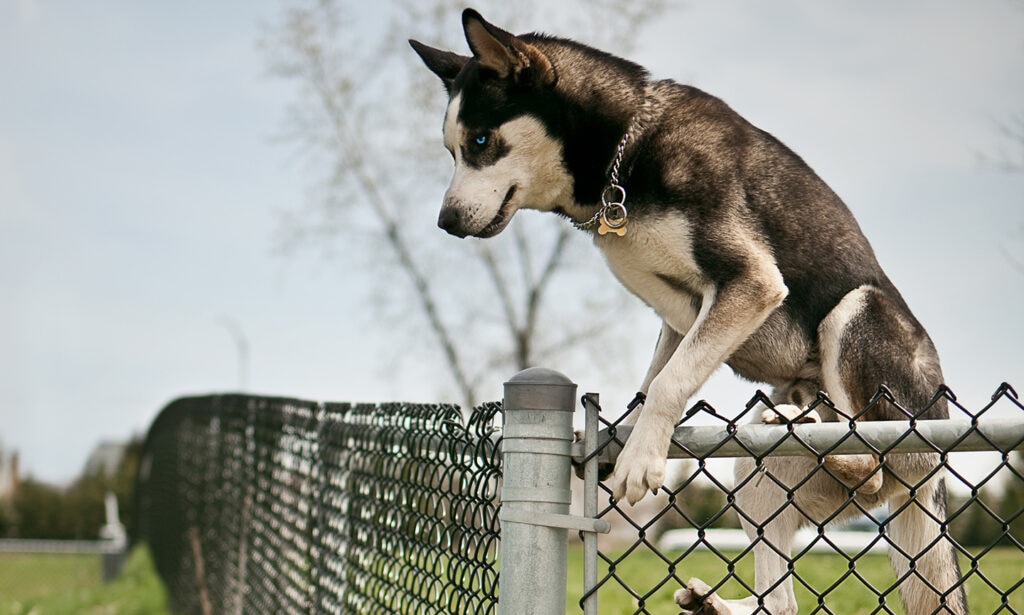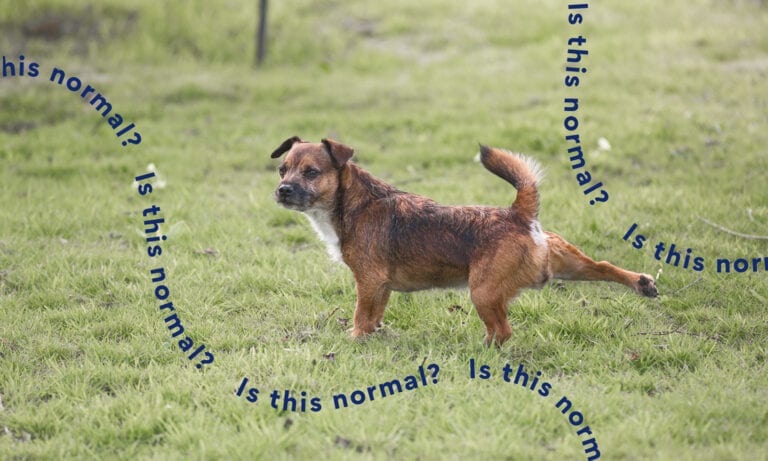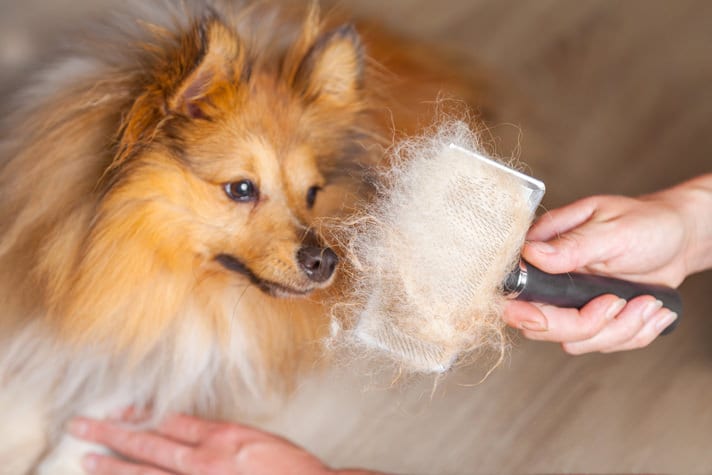In This Guide:
Understanding Husky Temperament and Behavior
The Siberian Husky has many desirable qualities. The American Kennel Club's (AKC) breed temperament standard calls for the dogs to be "friendly and gentle, but also alert and outgoing."
Many Husky behavior problems stem from these incredibly smart, high-energy dogs not having enough physical, social and mental stimulation—and they become bored.
Thousands of years ago, the dogs’ ancestors were bred to work in packs, pulling sleds through treacherous conditions in Siberia. They were so intuitive and intelligent they even knew when to ignore their sleigh driver's directions and make life-or-death decisions to keep their team alive.
"This is a very independent dog breed," says Donna Beckman, past president of the Siberian Husky Club of America and an AKC judge of the breed. She's also a Siberian pet parent, breeder and wrote a book about them.
But as these sled dogs became house dogs, they didn't lose their innate drive to run, problem-solve, or be part of a pack. They still need outlets for what they were born to do. So, if a Siberian is stuck alone in a small yard with no activity and little exercise, you will have problems.
"A lot of issues that people have with the dogs is their ability to meet the dog's needs," says Kailey Cullin, Dip. CBST, Certified PDTST (Certified in Professional Dog Training Science and Technology) and owner of the Cape Cod Dog Center in Massachusetts.
Unfortunately, these frustrations often can lead to pet parents surrendering their Husky, landing them in animal shelters.
"The dogs end up with people who haven't done their research and don't understand their behavior," says Michelle Breinholt, the Siberian Husky Club of America Trust rescue coordinator who works with more than 30 different rescue groups across the USA. "They find out Siberians are a handful."
10 Husky Behavior Problems
Below are 10 common Siberian Husky behavior problems, according to our experts, and dog training tips so you and your Husky can live in harmony.
1. Separation Stress
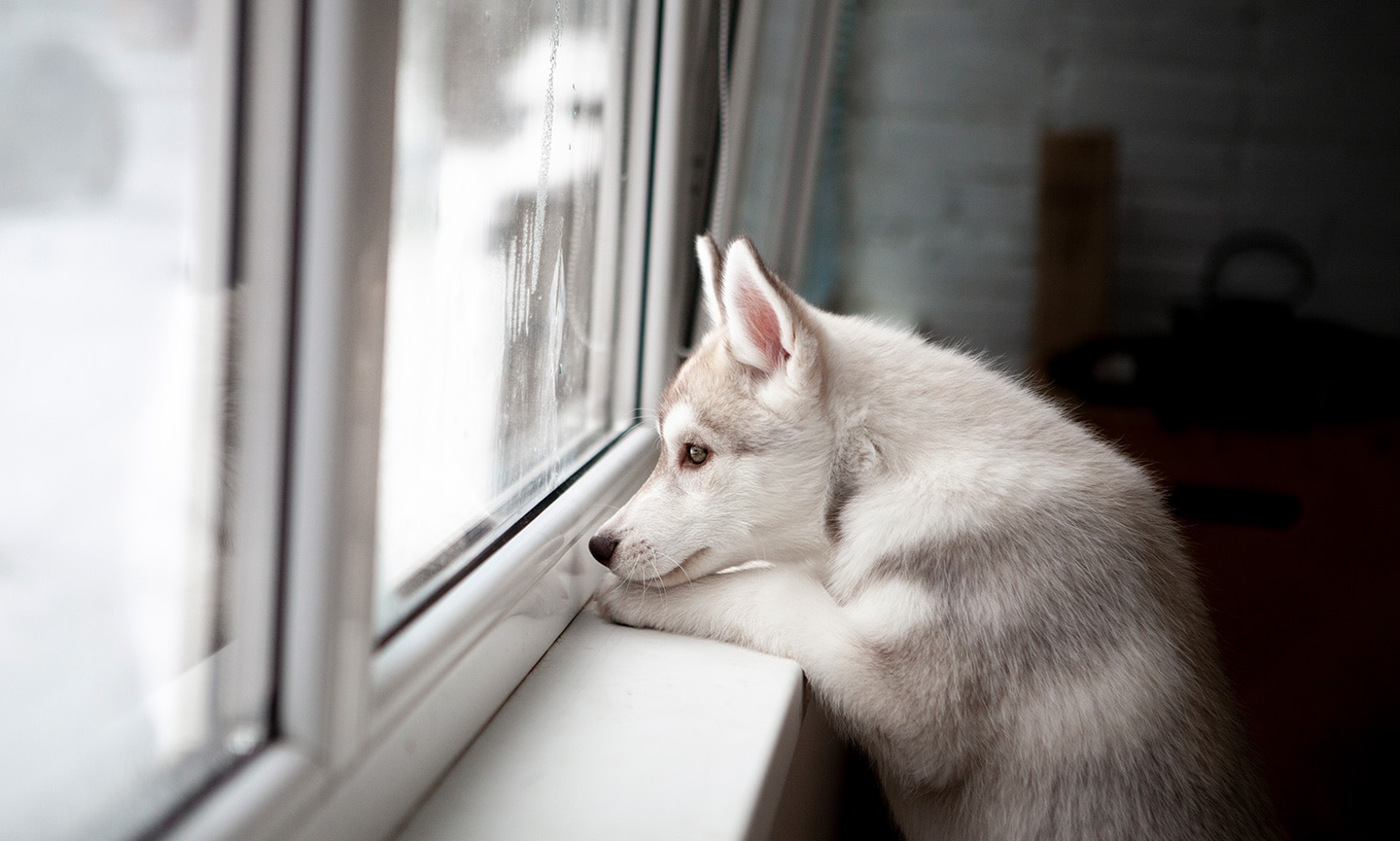
Sergeeva/iStock via Getty Images
Siberians are social and flourish from interaction with their packs and, now, families. While no dog likes being home alone for long hours, upset Huskies may unleash a Level-5 furry-cane.
You could see separation anxiety issues like panting, trembling and even eliminating in the house.
Trouble can also start when these energetic, working dogs don't get enough activity. "Boredom causes many problems," Beckman says. "They make their own games. That could be chewing, barking, escaping or tearing up your house." (*We'll cover those specific troubles in a moment.)
How to Prevent Separation Issues
Increase exercise: Huskies need a lot of exercise. Just how much varies. Some experts recommend at least two hours a day, but you have to consider the Siberian’s age, health and fitness level. Your goal is to tire them out so they’re not bored and don’t get into trouble while they’re home alone.
Take classes with your dog: Agility, fitness, tricks and training classes increase your activity, bond and relieve boredom.
Try dog daycare or a dog walker: If you leave for extended periods, hire help. "Think, 'How can I make this more suitable for them so they're not as lonely?" Cullin says. "Come up with doable solutions."
Learn more about separation anxiety in dogs.
2. Excessive Vocalization

madcorona/iStock via Getty Images
The good news is that your Siberian usually lets you know how they feel and vocalizes it. They bark, howl, and may even talk back to you–it’s how they communicated with their pack.
The bad news is if they're upset, they could be overly vocal and howl excessively or make strange noises. The emotional reaction could mean they’re sad you’re gone, annoyed, or trying to get attention.
How to Soothe a Vocal Siberian
Do they have separation stress? Refer to No. 1.
Don't reinforce their behavior: If your dog whines for your attention and you react, even negatively, they succeed.
Redirect: Spending time with your Husky and giving them something to do keeps them busy and less vocal. “It's saying, OK, maybe I need to play more games with them, so they don't end up howling,'" Cullin says.
Reward silence: When your dog is quiet, give them praise, toys or treats.
3. Destructive Chewing
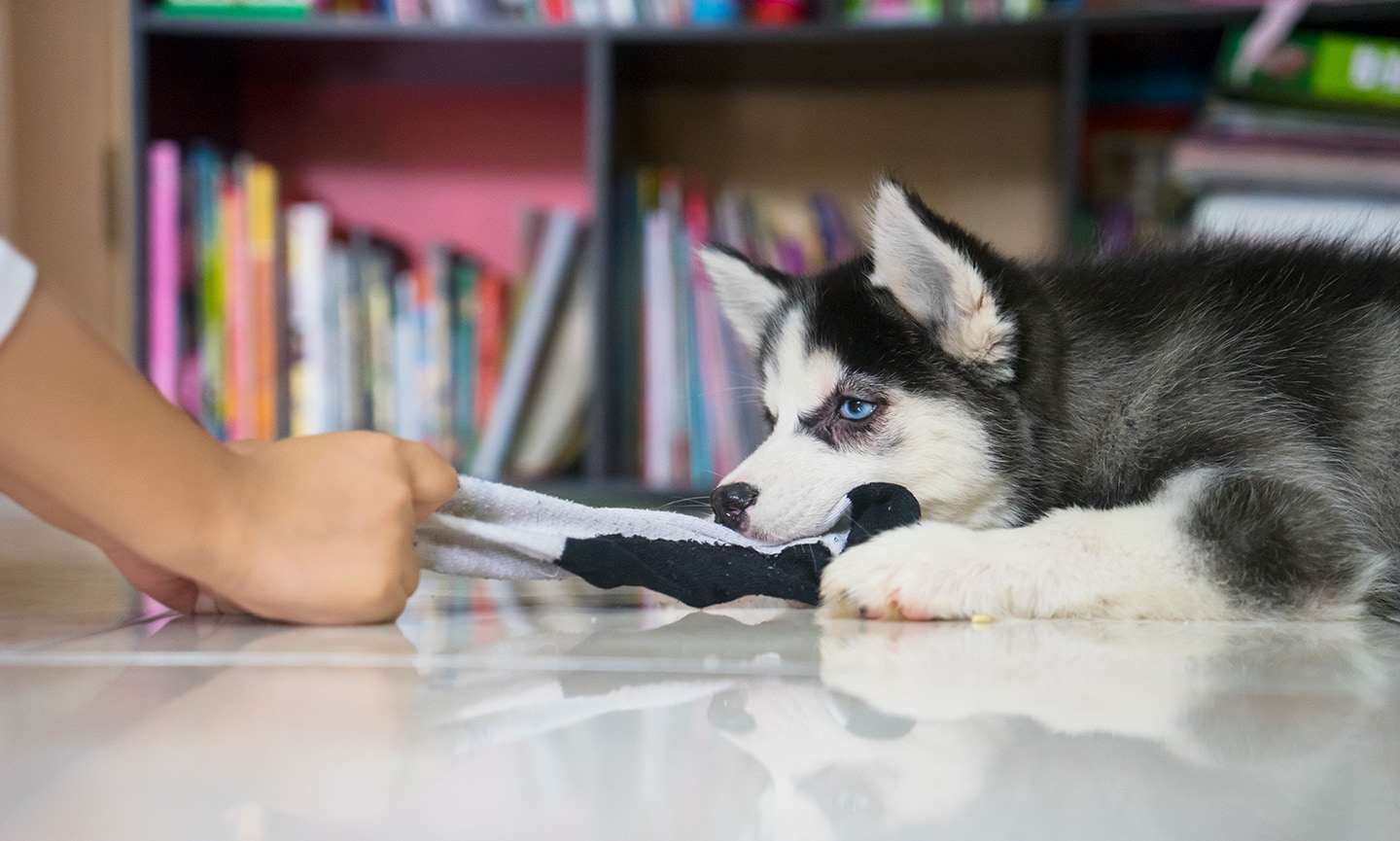
CreativaImages/iStock via Getty Images
Chewing is instinctive, natural and enjoyable for most dogs. Some like gnawing on bones and chew toys to relieve stress, explore their environment or entertain themselves.
But if your living room is filled with torn-apart fluff like a dog-shaming social media video captioned, "This used to be my couch," your dog likely has a destructive chewing problem.
Siberians get a bad rap for this, often because they’re unsupervised, bored or lonely.
How to Stop Inappropriate Chewing
Do they have separation stress? Refer to No. 1.
Supervise: Make sure they only chew what's allowed.
Teach the "Leave it” cue: Use it when you catch them chewing. "Say 'Leave it,' and reward them when they do with a treat or chew toy," Cullin says. "Your dog will only know what they can chew on if you teach them."
Give your dog a variety of chew toys: Think a stuffed KONG, Nylabone power chews and bully sticks.
Get more tips on how to curb destructive chewing.
4. Digging
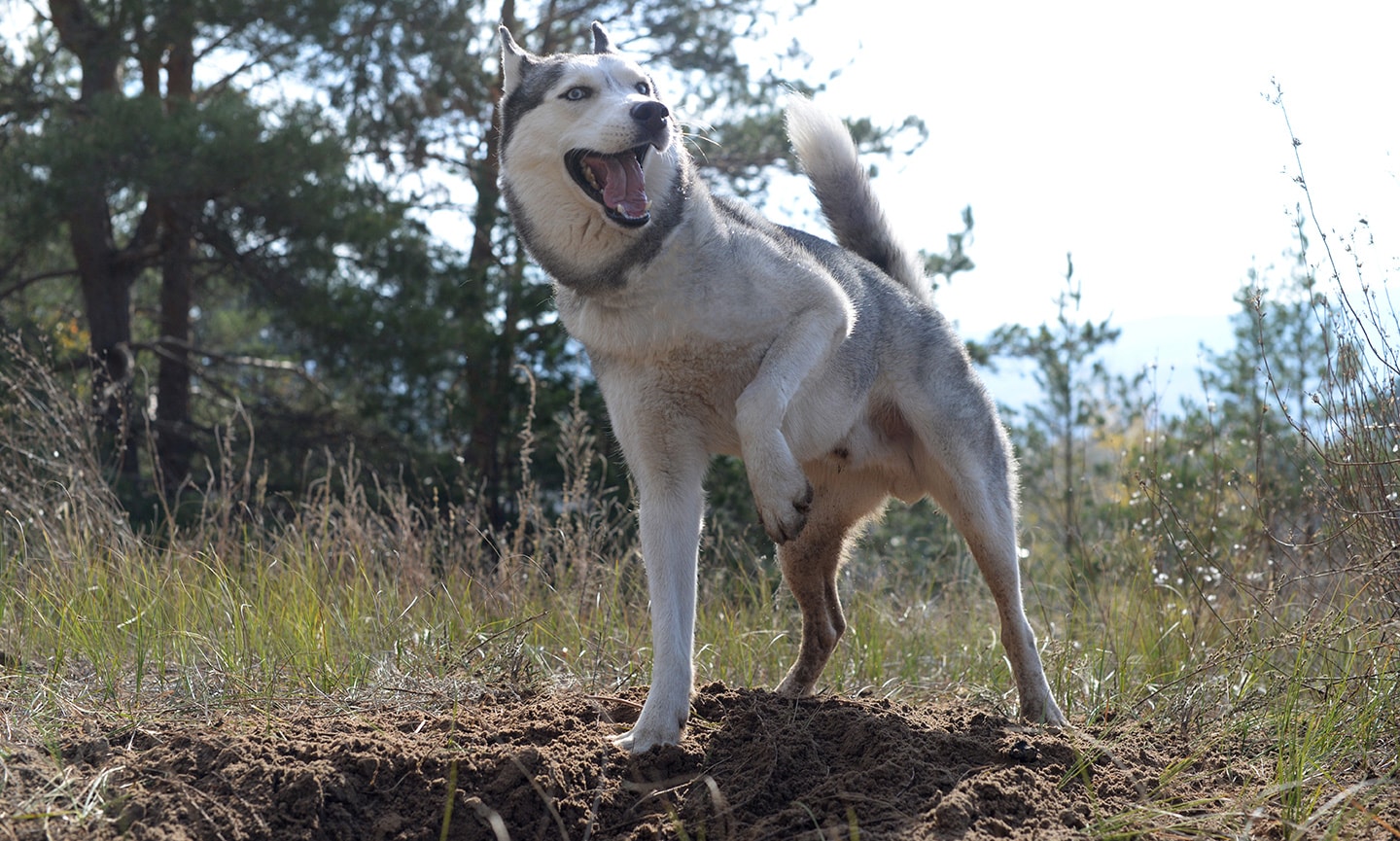
SkvortsovaSashas/ iStock via Getty Images
Huskies can be all-star diggers, known for creating crater-sized holes in yards.
“It’s a natural behavior that's so innate that it's tough to override DNA,” Cullin says.
They might be digging a den or trying to cool off, but they may also be trying to dig under your fence and escape.
Preparing for and curtailing digging can help you avert disaster.
How to Curtail Digging
Do they have separation stress? Refer to No. 1.
Supervise: Don't leave your dog outside unattended.
Designate digging spots: Show your dog places they can dig. Get a sandbox or put dirt in a baby pool.
"Bring them to the spot, make it fun, even hide a toy or treat for them to dig up," Cullin says. "Provide some outlet for what they naturally like to do."
Present an alternative: Try dog puzzles, a snuffle mat or games that allow your dog to engage their paws, faces and brains, similar to digging.
Get more tips on how to stop dogs from digging holes.
5. Escaping
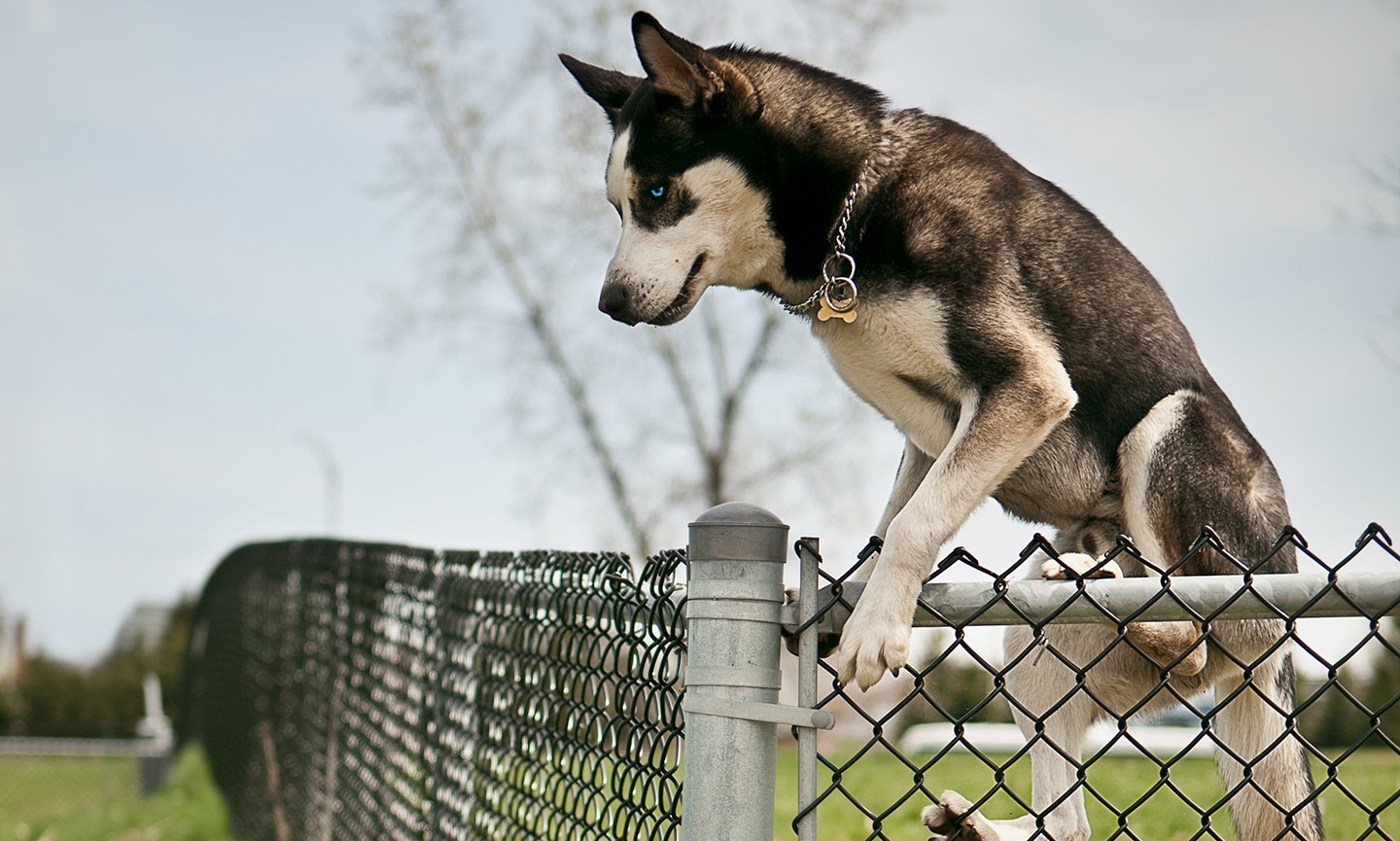
FelixRenaud/iStock via Getty Images
From digging out of their yards to breaking out of nearly any confinement, Siberians are notorious escape artists. They’re incredibly inquisitive by nature and may be looking to entertain themselves or see what’s going on over the fence–especially if they’re bored and left in a yard.
Breinholt has fielded calls from exasperated Husky parents. "They say, 'My dog keeps escaping. I can't deal with it anymore,'" she says.
Escaping is a serious safety issue. Your dog could be stolen, end up in a shelter or be killed.
How to Stop Escaping
Do they have separation stress? Are you supervising them? You get that by now.
Shut down escape routes: Evaluate your fence. Check for holes, broken boards or gaps. Can they slip under it? Can they get over it? If you don’t have a fence, always stay with them in your yard holding onto their leash.
"A Husky shouldn't have less than a 6-foot high fence," Cullin says. "Anything shorter, they're going to jump over, and they can climb very easily, too."
Crate train your dog: Get an escape-proof crate and make it a happy place. Put treats, their dog food or stuff KONG toys with peanut butter inside so they associate it with yummy things. (Need to crate train your dog? Find out here.)
6. Running Off
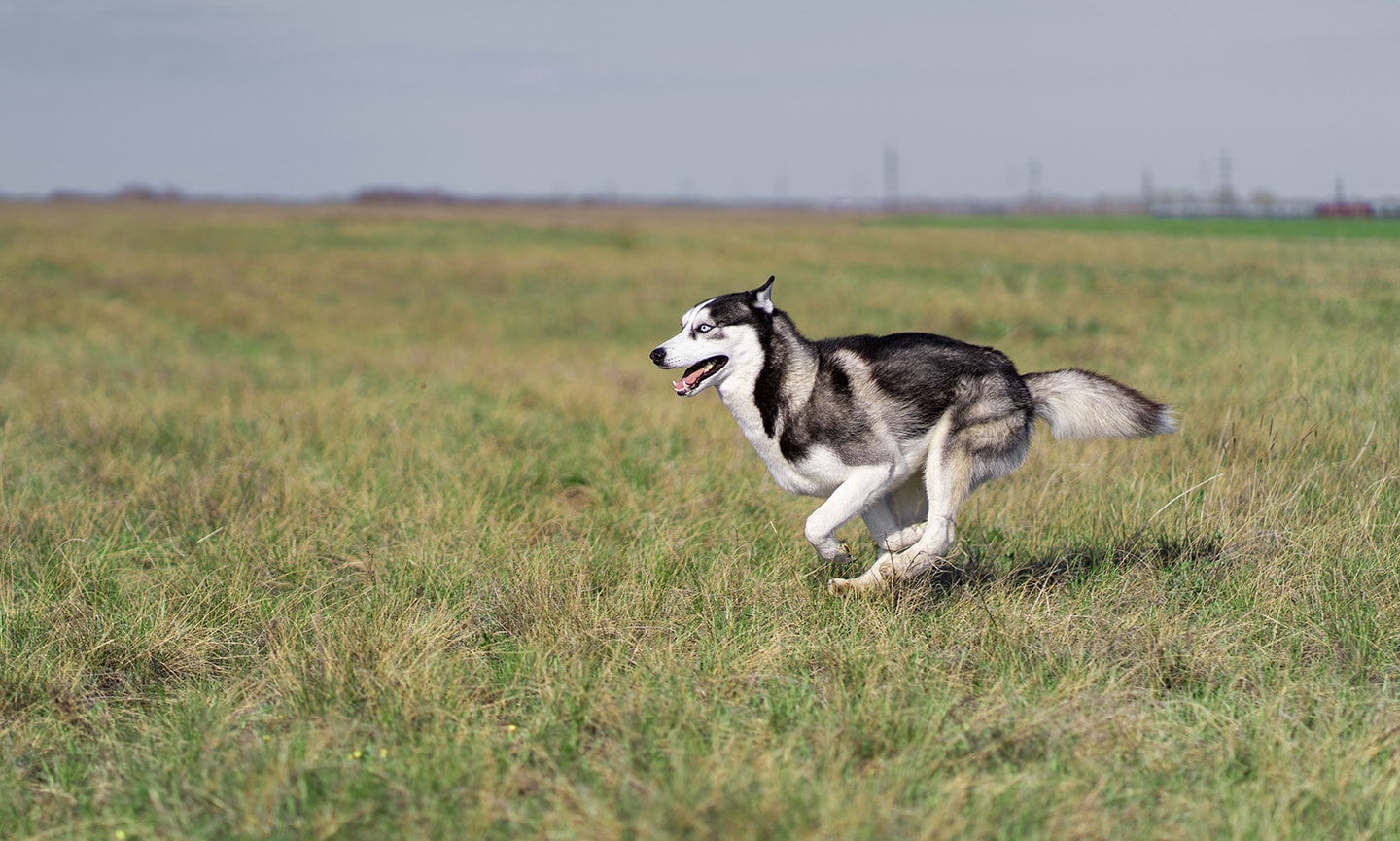
mikhail kholod/iStock via Getty Images
Running is rooted in this former sled dog's DNA. So, it's not a surprise that running off is a top Husky behavior problem.
"You're not going to be able to trust them off-leash or in a yard without a fence," Beckman says. "If you open the door, they're gone. They're not running away from you–they're running toward what could be fun."
How to Prevent Running Off
Keep doors and gates closed/locked: Make sure anyone who comes over (relatives, kids, contractors, the cable guy) knows an escape artist is lurking.
Block escape points: Put up an extra tall dog gate (if your dog won’t jump it) or keep your Husky in a crate or another room when you open a door.
Keep them leashed: When you're not in a fenced-in area. (As an extra precaution, put a canine GPS tracker on your dog’s collar so you can track them if they do escape and always microchip your Husky.)
7. High Prey Drive
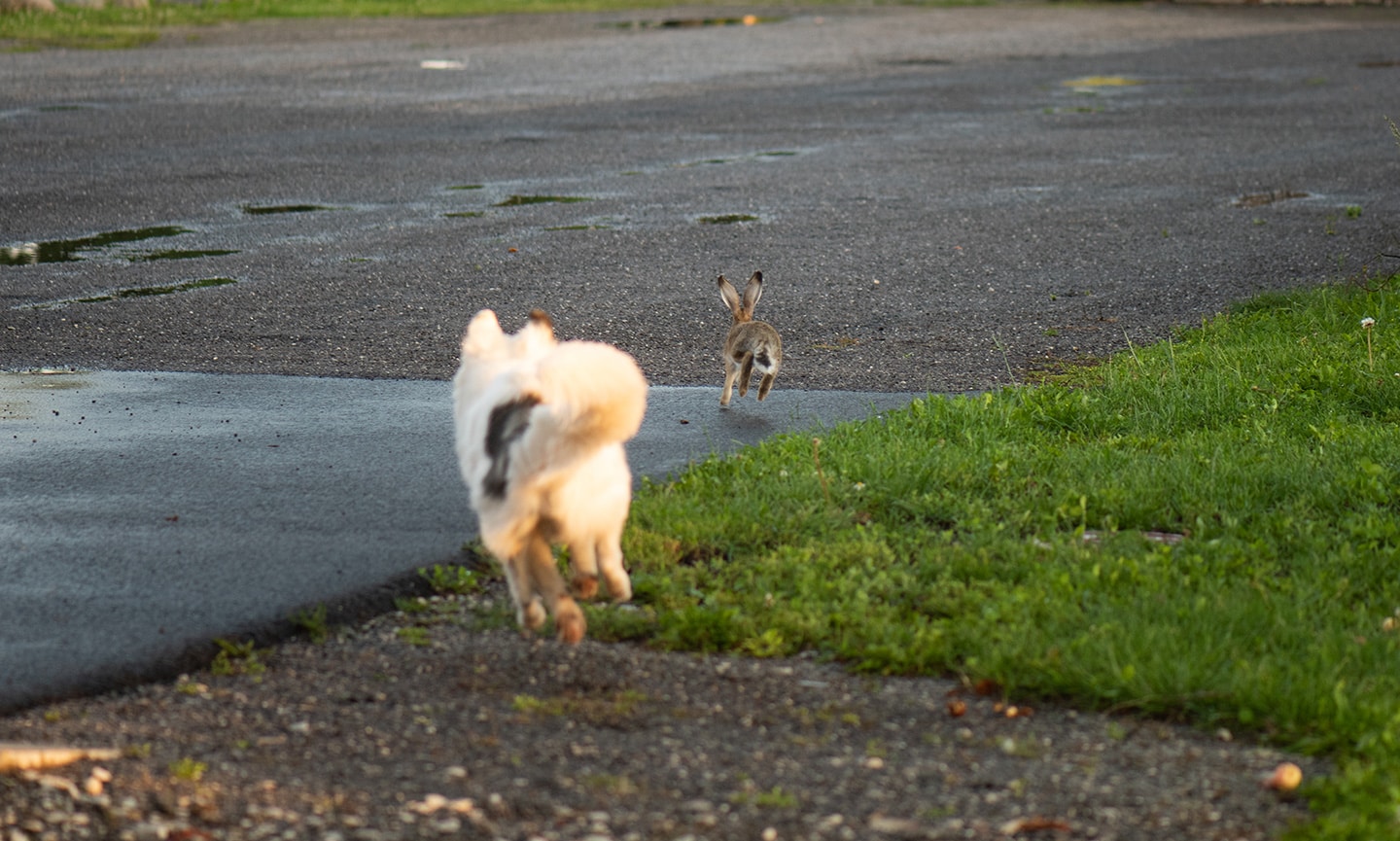
noonika/iStock via Getty Images
A high prey drive could be one of the reasons your Husky runs off. While their ancestors hunted for food, most curious Siberians still love to make a game of chasing critters–it’s a thrill for them.
"A Siberian who wants to chase something is going to chase it," Beckman says. "You want to avoid tragedy."
High prey drives can be challenging to manage, but you certainly want to avoid a skunk skirmish (because that disaster only seems to happen at midnight when you must be up early the next day).
How to Deal with a High Prey Drive
Keep them leashed: Anytime a small creature could cross their path.
Teach your dog "Stay” and "Leave it": These cues might be helpful for some impulse control, but your dog may "suddenly not be able to hear you" if a furry critter zips by.
Socialize your dog: Get them used to the company of small animals when they're at a young age. (It's not a guarantee they won't give chase in the future.) Get step-by-step expert instructions on how to properly socialize your dog.
8. Jumping
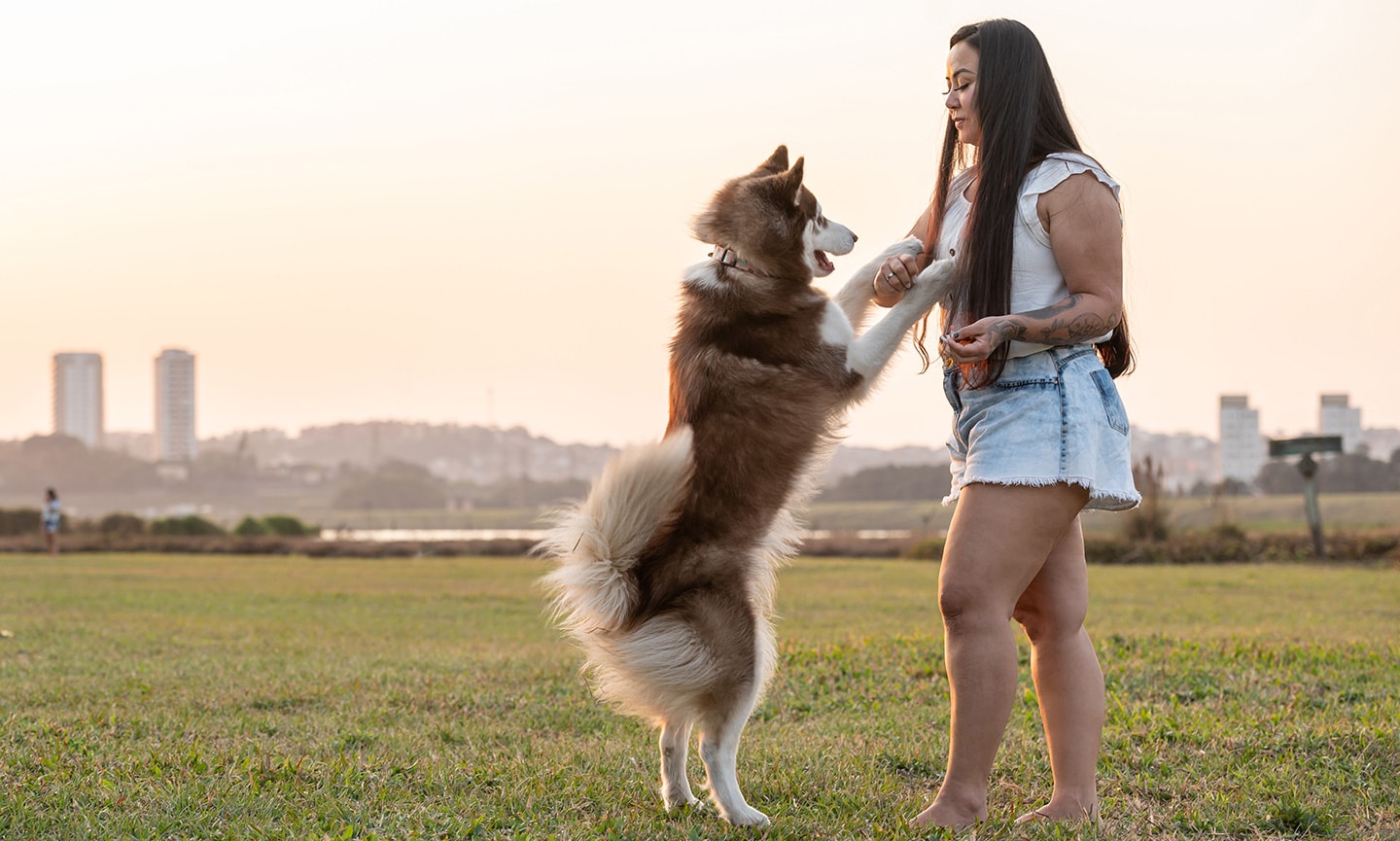
Elayne Massaini/iStock via Getty Images
What do you get when you combine a naturally athletic and energetic dog who's social and can't wait to see you? You may get a jumping Siberian.
It might seem cute when they jump at an early age, but as they grow into adulthood, you don't want them knocking over your neighbor's kid (who already hates you because of the howling).
How to Stop Jumping
Keep your dog leashed: So they can't jump on people.
Teach "Sit" and "Stay": Don't allow anyone to pet them until they remain in a relaxed seated position.
Teach the “Off” cue: Be consistent. Don't allow jumping on anyone.
9. Leash Pulling
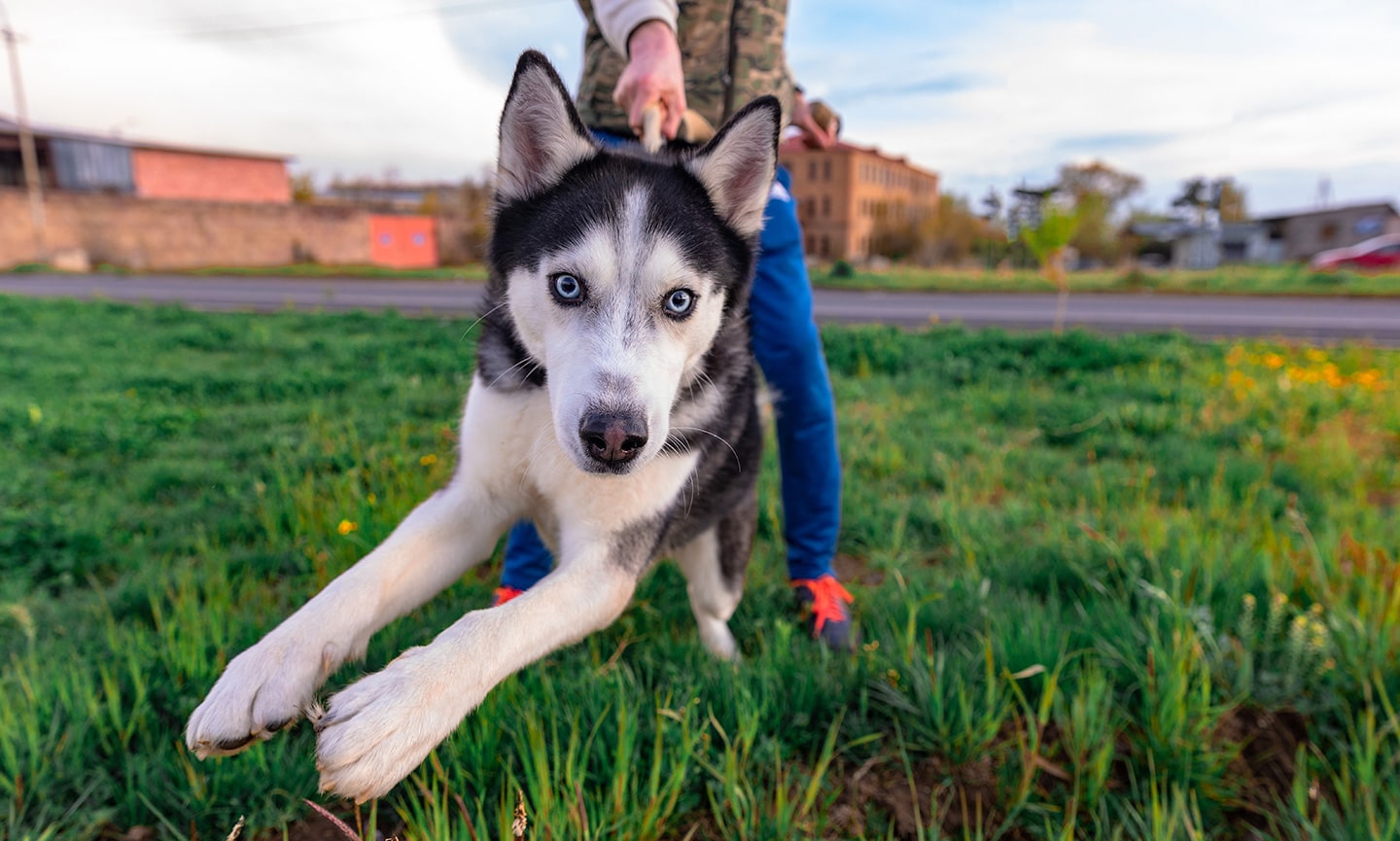
Daniel Tadevosyan/iStock via Getty Images
Considering the breed's sled dog-pulling past, it's not a surprise pulling is a common gripe. Not only is walking on a leash not a natural behavior for any dog, but our slow human pace must be frustrating for the fast-running Husky.
"People say, 'Oh my god, my Husky pulls,'" Cullin says. "Naturally, they'll pull you down the street if you don't train them otherwise."
How to Ease Pulling
Stop walking: If they start pulling on the leash.
"Train them by practicing, 'If you pull me, I'm not moving,'" Cullin says. "Only move when they follow your lead, then reward them.”
Teach your dog to "Heel": The goal is to have them walk next to you.
Try the "Look At Me/Watch Me" cue: To get their attention.
Get more expert advice on how to stop a dog from pulling on the leash.
10. Perception of Stubbornness
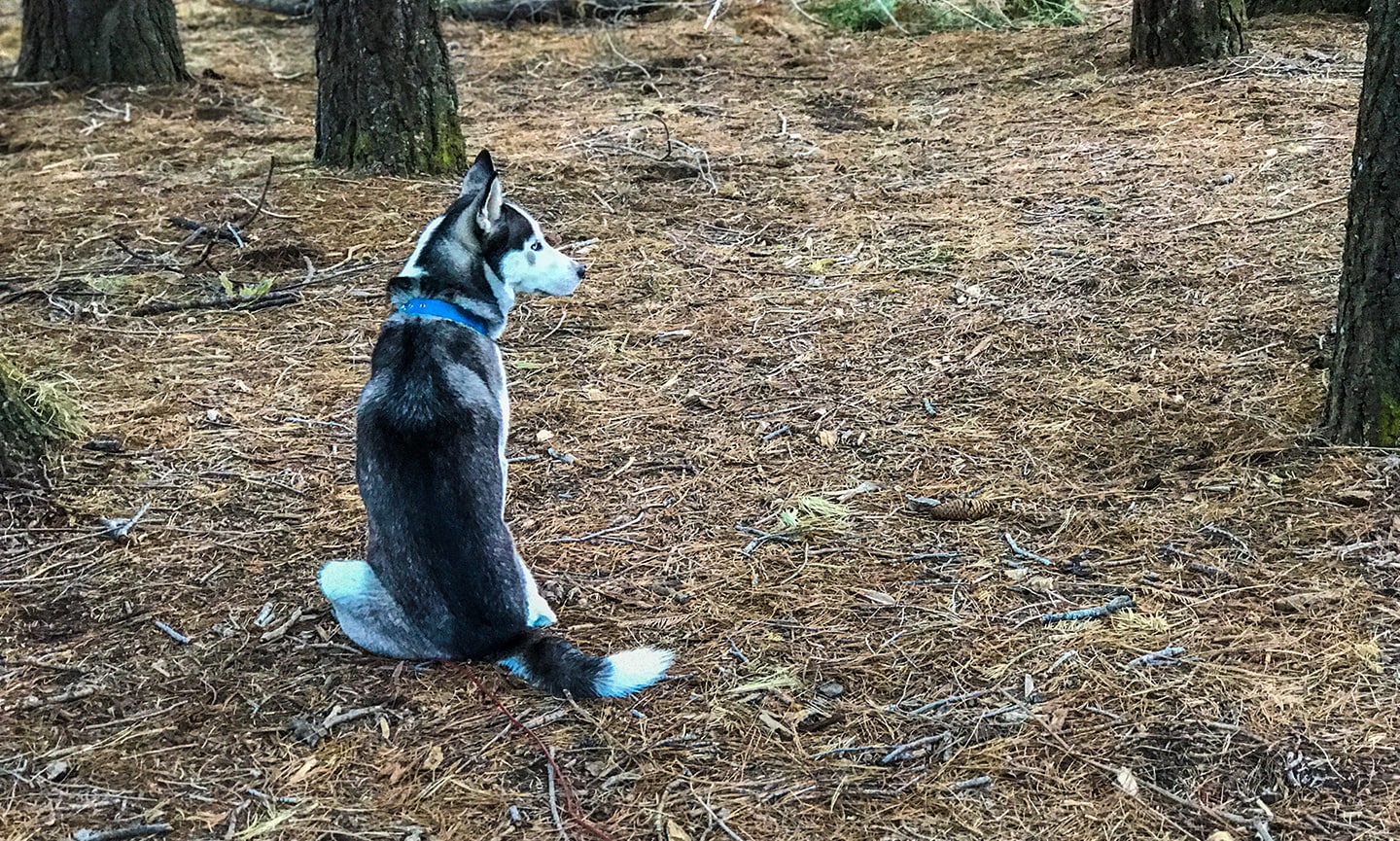
Riderolga/iStock via Getty Images
When you give a Siberian Husky a cue, they may give you the stink eye while appearing to consider your request. Remember: They were originally bred to be independent.
"They make their own decisions," Beckman says. "You must work around leash them because you won't change them. Respect that, and you'll get along great."
How can you outsmart them?
Training a Seemingly Stubborn Siberian
Try that “Watch Me” cue: So your dog looks to you for direction.
Use high-value treats: Your dog learns they get rewarded for good behavior with yummy stuff. Try these freeze-dried beef liver treats.
Be assertive: Dogs respond well to positive leaders.
"Huskies are often called stubborn; in reality, it's about having control over your dog and working with them at their pace," Cullin says. "They're fully capable of being trained."
Chart: Siberian Husky Behavior Problems and Solutions
Take a screenshot of this chart for easy reference.
Separation Stress
Increase activity, try daycare/walker
Vocalization
Redirect the behavior, reward silence
Destructive Chewing
Supervise, increase activity, try chew toys
Digging
Supervise, try digging spots
Escaping
Supervise, evaluate fence, crate training
Running Off
Keep doors and gates closed
High Prey Drive
Keep on-leash
Jumping
Keep on leash, teach cues to curtail jumping
Leash Pulling
Stopping, teach heel cue
Perception of Stubbornness
Use high-value treats, be positive leader
Are Huskies Aggressive?
Any dog who is not well-socialized, well-trained or well-bred could exhibit aggressive behavior. And even the friendliest of breeds of dogs can bite.
Siberian Huskies are not bred to be fierce or as guard dogs. That's not in their DNA or typical temperament. "Our standard says they are not to be aggressive," Beckman says.
Yet some homeowners insurance policies exclude Huskies from coverage. Beckman worries there needs to be more clarity over the breed.
"Husky has become a generic term for a dog that lives in cold climates and pulls a sled," she says. "The only breed recognized by the AKC, with the word Husky in its name, is the Siberian Husky. We get blamed for a lot of dogs doing a lot of bad things, that is a mixed breed dog with prick (pointed) ears."
When to Hire a Dog Behaviorist or Trainer
Prevent problems before they start. Hire a behaviorist or trainer to train you to train your dog immediately after bringing your Siberian home.
Whether you have a Husky puppy, a year-old dog or an older adult, go to positive reinforcement obedience training classes together (which can be fun) or hire a private trainer to learn the basics.
"It sets the foundation for your relationship and increases your bond. They're less likely to do naughty things," Cullin says.
Avoid punishment based training. "When they experience any kind of pain, fear or intimidation, that almost aggravates them to the point of sometimes aggression," Cullin says.
How to Handle Behavior Problems in Huskies
If your Siberian develops behavior problems, seek help immediately. Contact the trainer or behaviorist you worked with for basic training or find another professional.
Behavior issues that are puzzling to solve can arise for even experienced dog parents. Determine what's triggering the behavior and ensure you're not inadvertently reinforcing it.
"You want to get on the right page instead of spinning your wheels and allowing your dog to do things for months on end, making them harder to train," Cullin says.
Also, consult your veterinarian to ensure health problems aren't causing your dog to be cranky.
Husky Behavior FAQs
Q:
Are Huskies good family dogs?
Q:
Are Huskies hard to train?
Q:
Are Huskies good with other dogs?
Siberian Huskies are the stars of shows, movies and books. They're beloved athletic team mascots. The breed may capture your heart, but only get one if you can give them everything they need. Because if a Siberian ends up in an animal shelter because of behavior issues, it could cost them their life.
"The rescues I work with are overwhelmed," Breinholt says. "Couple that with the fact they are not the breed for the average dog person makes it difficult to find them good forever homes. But we keep trying."
Want more on Huskies? Read our comprehensive Siberian Husky dog breed guide.
Brush up on more dog behavior:
Share:
